Murano, an island famous worldwide for its exquisite glass production, is among the best things to see in Venice. Located less than two kilometers north of Venice and easily accessible by Vaporetto, Murano attracts thousands of travelers annually. Despite its size, there are unique things to do in Murano, and that’s what my travel guide covers.
To be more precise, Murano is actually a cluster of islands interconnected with bridges. Featuring its own Grand Canal, the island in the Venice Lagoon is lately preferred by international travelers for its more reasonably priced hotels and proximity to the Serenissima. Therefore, in this Murano guide, you’ll find the top things to see on the island, plus the best places to stay. Moreover, you’ll also see my photos and get travel tips for visiting Venice’s Glass Island.
So, let’s begin with the best things to do in Murano and the guide to this majestic Venetian island.
*Some links are affiliate links. It means that if you buy something, I might earn a small commission at no additional cost to you.
The best things to do in Murano, Venice
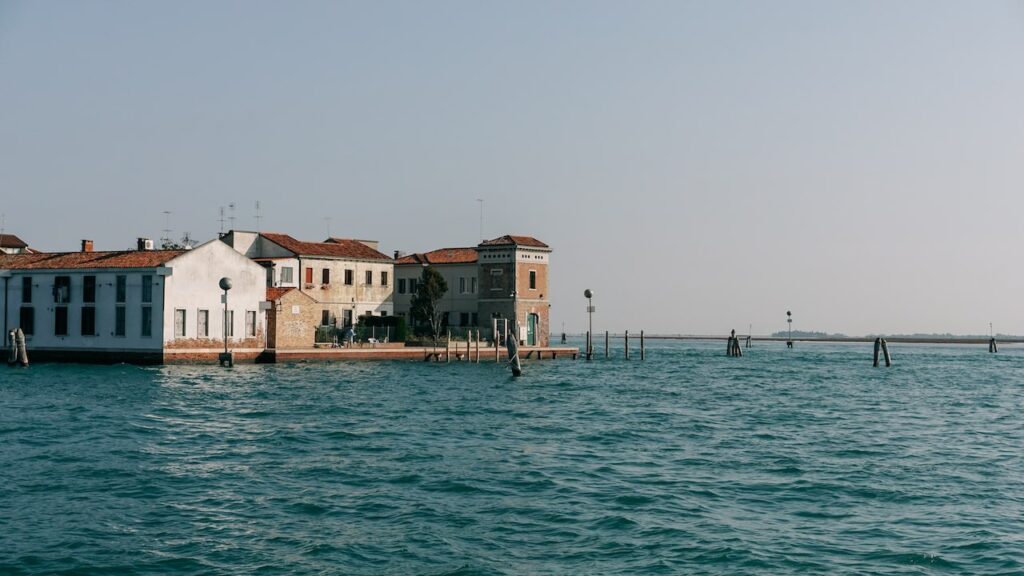
Compared to Venice, Murano is more compact, and at night, it feels significantly emptier. The island receives many daytrippers, but after their departure, you can enjoy the easygoing local rhythms. Although most travelers visit Murano for its iconic glasses, there are several more things to do and see on the island.
So, let’s discover what you shouldn’t miss when visiting the island.
Visit the Murano Glass Museum
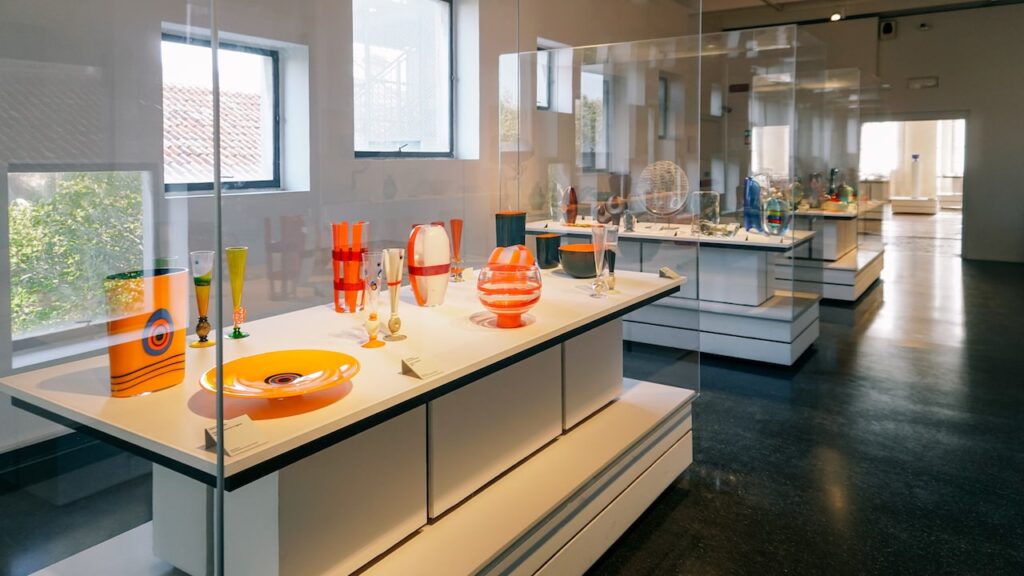
The Murano Glass Museum (Italian: Museo del Vetro) is a must-see. I always suggest visiting the Glass Museum immediately after stepping on the island’s welcoming soil. Interconnected with the long glassmaking tradition, the Glass Museum serves as a perfect introduction to the island’s life and the development of glass production.
Founded in 1861 and originally a patrician’s house, the Glass Museum showcases more than twenty centuries of glassblowing. Discovering the slow process of Murano glass-making from early antiquity until the late 20th century is a mindblowing journey. The different techniques and the origins of this long tradition create a fascinating canvas of local life.
The museum hosts both permanent and contemporary exhibitions and is relatively compact. You won’t need more than one hour to go through the exhibits, and strolling in the rooms of an old palazzo adds an extra layer to the experience. The entry fee is 11 euros for adults, and you can purchase a ticket for the Glass Museum here.
Tip: When reaching Murano by Vaporetto, disembark at the “Museo” stop. You’ll find the Glass Museum in the corner.
Attend a Murano Glassblowing demonstration
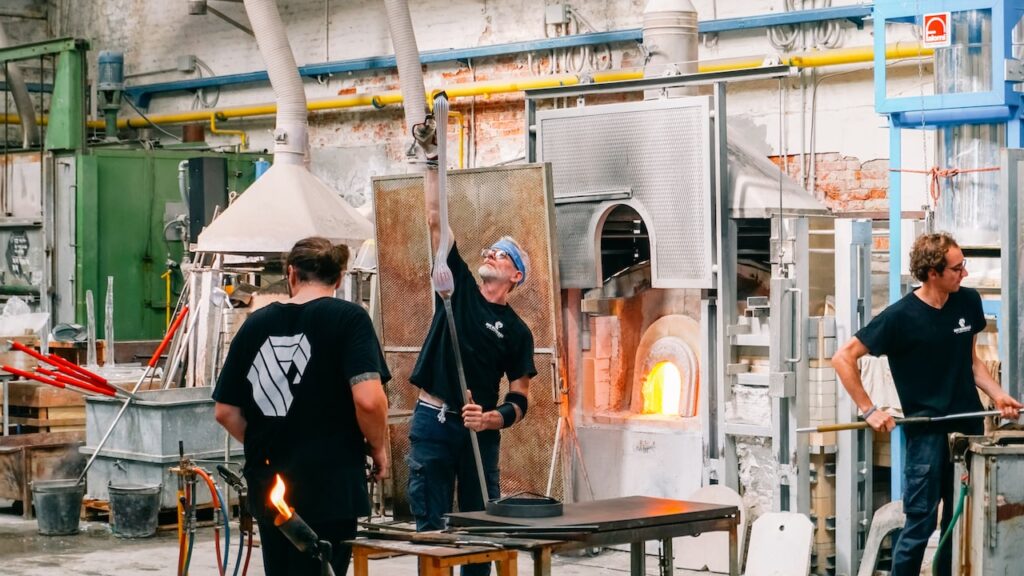
Murano Glass is not a lost tradition: in fact, it’s exactly the opposite. Glassblowing is the island’s primary industry, overshadowing every other sector. As you can easily imagine, glassmaking is omnipresent, and you’ll come across small factories producing glass in every step you take.
When visiting Murano, I believe it is (almost) obligatory to attend a local glassmaking demonstration. The technique the locals use is impressive, and seeing the production up close is a mesmerizing experience. Depending on your interest and curiosity, there are various glassblowing demonstrations in Murano to choose from. They range from free demonstrations to private ones; in the latter, you’ll also have the option to create your own Murano glass!
Let’s break down your options.
The best private glassblowing demonstrations in Murano
If you’d like to have a personalized experience and see up close how a local artisan produces glass, these are your best options.
A guided tour from Venice to Murano with a glass demonstration. This guided tour starts from Venice and takes you to the island for a glassblowing demonstration. You will also create your own glass jewelry -bracelet, earrings, or even a keychain. You can book this tour here.
Gino Mazzuccato Factory. In this guided tour, you’ll visit Gino Mazzuccato’s famous factory. After a short masterclass, you’ll actually take part in the glassblowing process. Book your Mazzuccato Factory visit.
Glassblowing demonstration and drinks. Finally, if you just want to glimpse the Murano glassmaking tradition without participating, this tour is for you. You will see a 25-minute session while sipping a glass of prosecco -and all that for just 10 euros. Book this glass tour here.
Free Murano glassblowing demonstrations
Plenty of local factories open their doors to visitors to present their techniques. While free visits are not interactive at all, you can still get an idea of how local glass is made. If you’d like to have a quick look at such a factory, I suggest the “Wave Murano Glass.” Established in 2017, this factory will show you how the glass masters work and create the island’s iconic glass. Observing their work resembles choreography, and it’s a joy to see a crew using furnaces and melting glass.
You can see Wave’s exact address on Google Maps.
Stroll around the island and buy glass

Murano is charming, but it doesn’t have the labyrinthine touch of Venice. Moreover, it has more open space to enjoy spectacular views of the Venetian lagoon, and exploring its streets at a slow pace will expose you to its rhythms. The Grand Canal views are beautiful, and landmarks like the Faro, the island’s lighthouse, will add impressions to your mind and camera.
Alas, sooner or later, everything will be about the glass. I talked earlier about the factories and the museum, and now it’s time to shop original Murano Glass. As you can easily imagine, plenty of stores and showrooms sell glass, and it won’t be hard to find one. However, purchasing Murano glass comes at a price, so make sure to pick a nice one according to your budget.
As a rule of thumb, I’d rather buy glass from a showroom that runs its own factory than from a random store. Although stores sell local glass, the showrooms have a greater variety and usually offer a certificate of originality. The best advice I can give you before purchasing glass is to imagine how to transport it back home. These sensitive items should fit in your carry-on rather than your checked luggage to avoid returning back home with a damaged product.
See the Chiesa di San Pietro and the Duomo
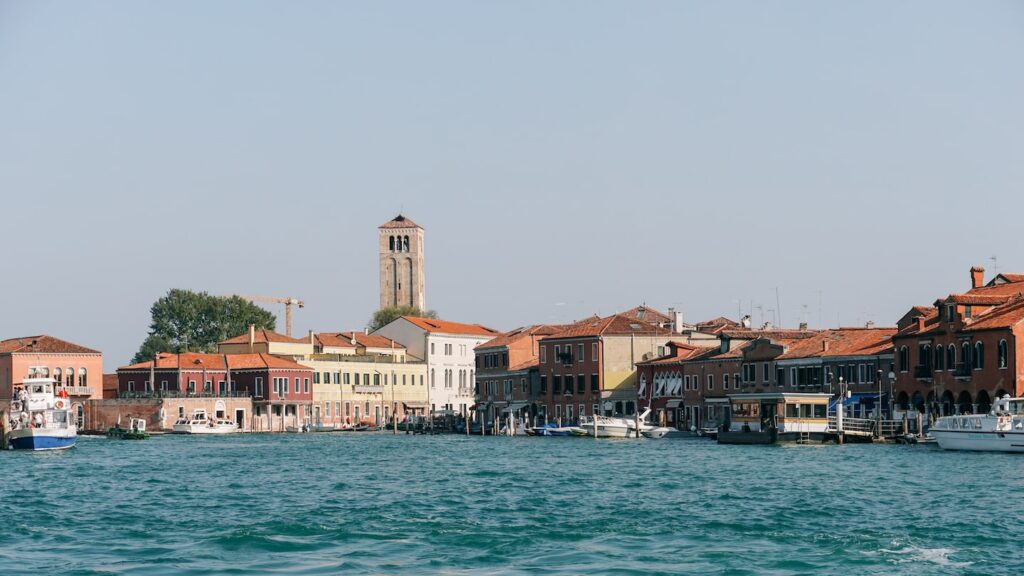
On this side of Italy, you will definitely find more impressive churches. However, the relatively humble Chiesa di San Pietro Martire has a long history and deserves a visit.
Dating back to the early 16th century, the Church of San Pietro once hosted iconic paintings of the era that later became part of the legendary Accademia Gallery. Nowadays, you can see in its interior the works of Tintoretto and Veronese, the world-famous Renaissance masters. The building itself deserves your attention because it’s made of brick and features a beautiful rose window.
In the same style but more impressive architecturally is the Duomo, the island’s main Cathedral. The Basilica of Santa Maria e San Donato is one of the oldest in the lagoon, and it’s famous for its Byzantine mosaic dating back to the 12th century. According to the legend, beneath the mosaic, Saint Donato is buried.
And here’s why churches are a must-see in Murano. There are only four left, and I guess you suspect why: the rest were demolished and replaced by glass factories.
How to get to Murano Island from Venice
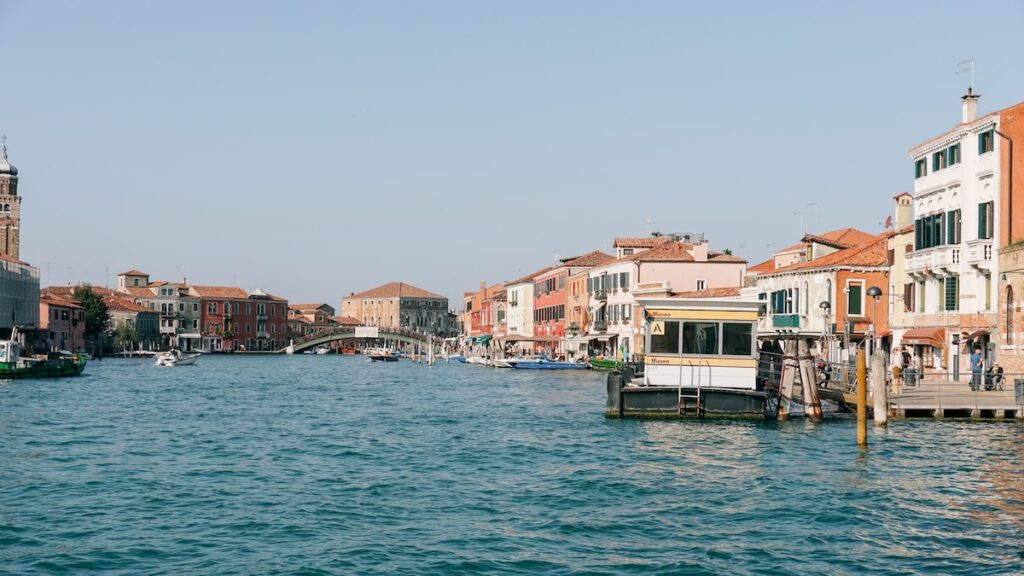
Getting from Venice to Murano is very easy. I have written an in-depth article analyzing every possible way to reach the island. You can read here the article about traveling between Venice and Murano, but I’ll also add some quick info straight below.
As I already stated, the journey between Venice and Murano is straightforward. The best way to visit Murano is by the public waterbus, the famous Vaporetto. There are three starting points in downtown Venice.
Fondamente Nove. That’s the closest point to Murano, and it only takes 10-12 minutes to reach the island. Vaporettos 4.1, 4.2, and 12 travel several times per hour to and from Murano island.
San Zaccaria. This is the closest stop to the famous St Mark’s Square. You can use Vaporettos 4.1 and 4.2 again, but the journey is longer and lasts approximately 45 minutes.
Santa Lucia Train Station. Located at the entrance of Venice, the Santa Lucia station will be the first you’ll see if you arrive at the Serenissima by train. In that case, embark on Vaporetto Line 3 and reach Murano in less than 20 minutes. Alternatively, 4.1 and 4.2 also call at Santa Lucia.
As I wrote in my Venice Vaporetto guide, the water buses are the best and only way to commute in Venice. However, they are pricey (almost 10 euros for a one-way ticket!), so it’s better to pre-purchase a pass for your entire stay. A weekly pass costs 65 euros and is a great option if you don’t want to constantly deal with buying tickets.
You can purchase a Vaporetto Pass here.
Where to stay in Murano
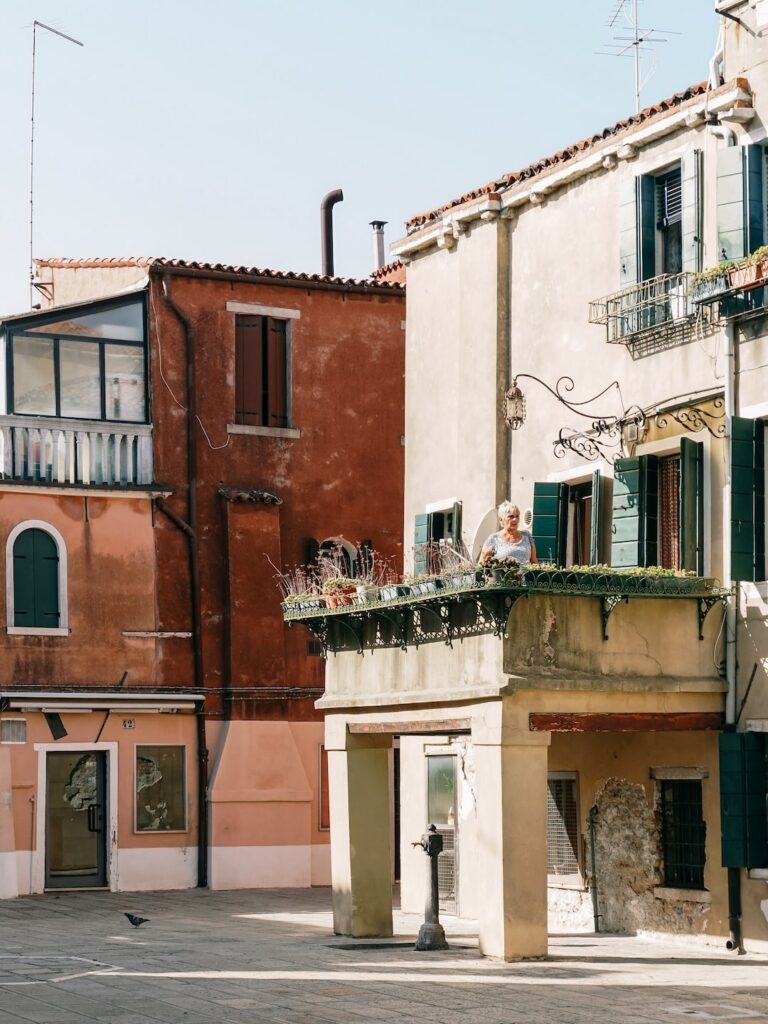
As I stated in the guide’s introduction, many international tourists have preferred Murano for two main reasons lately. The first reason is that it’s more moderately priced for Venice’s standards and also due to its quieter rhythms. Additionally, the rooms are usually bigger than in downtown Venice, which is always a plus for people searching for comfort and making the most of the money they spend.
So, in this section of the Murano travel guide, I’ll share the best places to stay on the island.
The best hotels in Murano
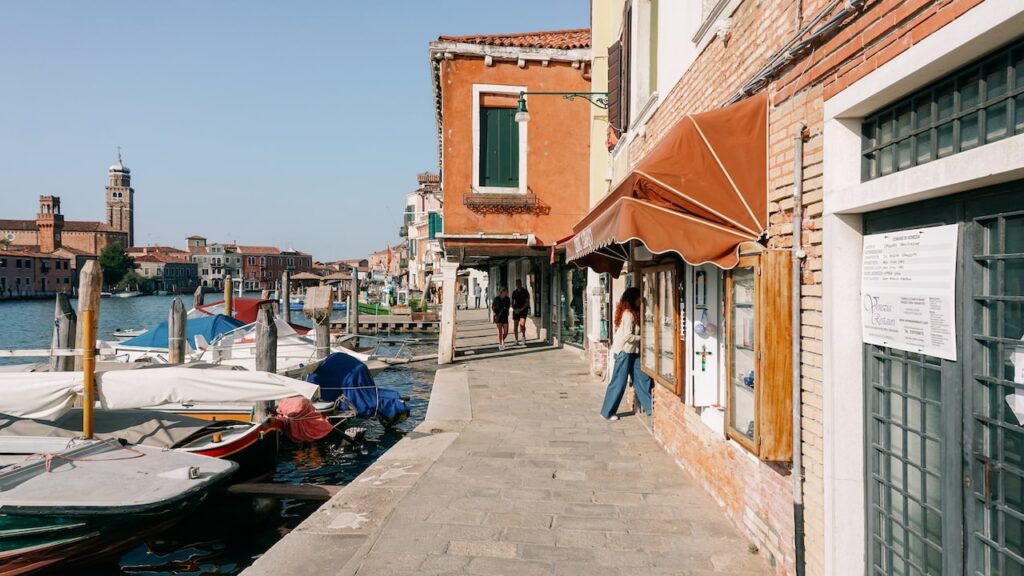
NH Collection Murano Villa. This stunning hotel is on the island’s heart, features a magnificent terrace, and offers airport transfers to its guests. It’s one of the best accommodations in Venice, and the daily shuttle services to Saint Mark’s Square are also a plus. Buffet breakfast included. See prices and availability for the NH Collection here.
Hyatt Centric Murano. On a prime position straight at the Grand Canal of Murano, Hyatt is a fantastic hotel tastefully decorated with local glass and furniture. All rooms have coffee machines and Venini lamps, and the hotel hosts a permanent exhibition of local artists. Hyatt is set in a former glassmaking furnace and is home to Osteriva, one of the best restaurants on the island. See prices and availability for Hyatt here.
Murano Palace. Close to the Vaporetto stop “Colonna,” the Palace is for people searching for old Venetian splendor. The rooms are traditionally decorated, and a buffet breakfast is included. The views of the Rio dei Vetrai Canal are stunning. Book your room at the Palace here.
Casa Sulla Laguna. That’s one of the most down-to-earth accommodations in the entire lagoon. For Venice’s standards, the prices are moderate, but the services are of high quality. Casa Sulla Laguna features a beautiful sun terrace and excellent sea views. Murano Navagero Vaporetto water bus stop is just around the corner, making it an ideal spot for commuting to Venice. See prices and availability for Casa Sulla Laguna.
Please use the interactive map below for all other accommodation options in Murano.
Murano Island FAQ
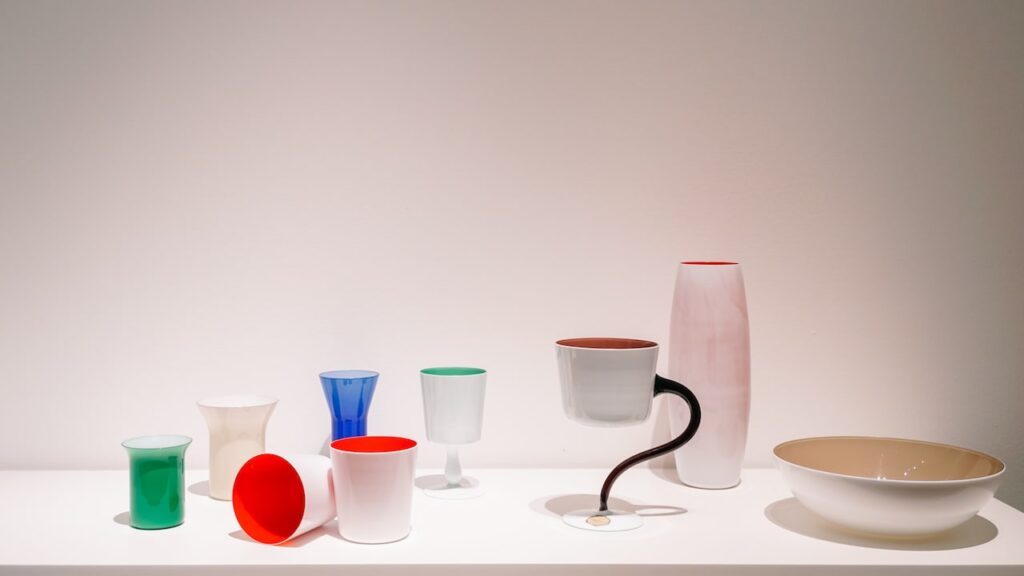
In the final section of this travel guide to Murano, you’ll find some frequently asked questions about the island. If you don’t find the reply you’re searching for, please leave a comment, and I’ll do my best to help you.
Is Murano worth visiting?
Absolutely. Murano ranks among Venice’s highlights, and it definitely deserves a visit. Known for its long glassmaking tradition and stunning lagoon views, the island is a must-see for your trip to Venice.
Can you travel between Murano and Venice on a gondola?
No, unfortunately, that’s not possible. Gondolas are used mainly in Venice’s inner canal and can’t travel in the open sea.
Can you visit Murano and Burano in one day?

Yes, it is. Most people will visit Murano and Burano on a day trip from Venice. Both islands are compact, and strolling around their picturesque streets is a wonderful experience.
Are there any organized day trips to Murano and Burano?
Yes, plenty of organized day trips combine visits to Murano and Burano. The best tour to the two islands on a private boat is this one, and it also includes a glassmaking demonstration.
Is it better to go to Murano or Burano?
You can’t compare the two places. While both of them have charm, they differ in looks and local rhythms. Murano is famous for its glassmaking tradition, while Burano is known for its lace and colorful houses. I suggest you visit both.
How can you identify if Murano glass is real?

To tell if the Murano glass you’re about to buy is real, you’ll have to see the “Vetro Artistico” sign placed in the store’s window. This is a certification that the glass you’re seeing was indeed created on the island. The shop’s label and the artisan’s signature are also two extra signs to keep an eye on.
Can you drink tap water in Murano?
Yes, water in Murano is 100% safe to drink. The same goes for Venice.
Things to do in Murano, Italy: Conclusion
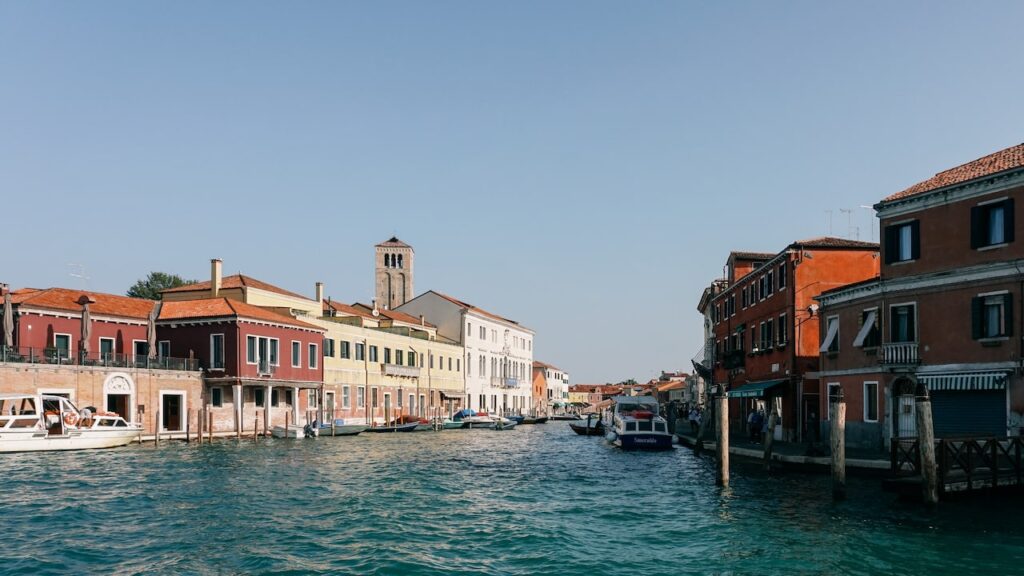
Despite its size, Murano has several things to enjoy and keep you occupied for your entire stay. Apart from its undeniable beauty and glass blowing, the island is a paradise to walk around and discover its hidden corners -and that’s one of the best free things to do in Murano. Moreover, attending a Murano glassblowing demonstration is one of the must-do experiences to understand better how the island developed and eventually thrived.
Combining a visit to Murano with the nearby islands of Burano and Torcello is highly recommended if you have a few days in Venice. Visiting all three islands will give you a great view of how life unfolded in the Venice lagoon throughout the centuries. And if you want to escape Venice’s crowds and have more spacious rooms, consider staying in Murano: its proximity to Venice by Vaporetto makes it a good spot for some relaxing days while saving some cash.
More about Venice: Venice Gondola guide, Marco Polo Airport Guide, Lido Guide, Burano Guide, Ponte dell’ Accademia, The Biennale
Pin it for later
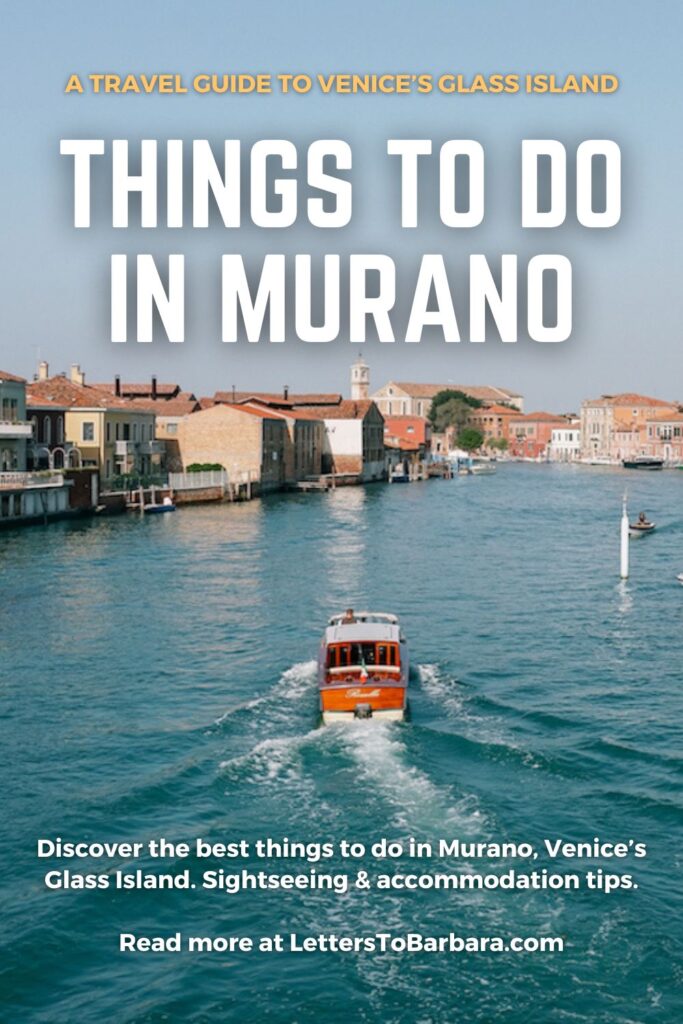
Sharing is caring. Share this article about the best things to do in Murano, Italy, with your friends.
Last Updated on January 14, 2025 by George Pavlopoulos

